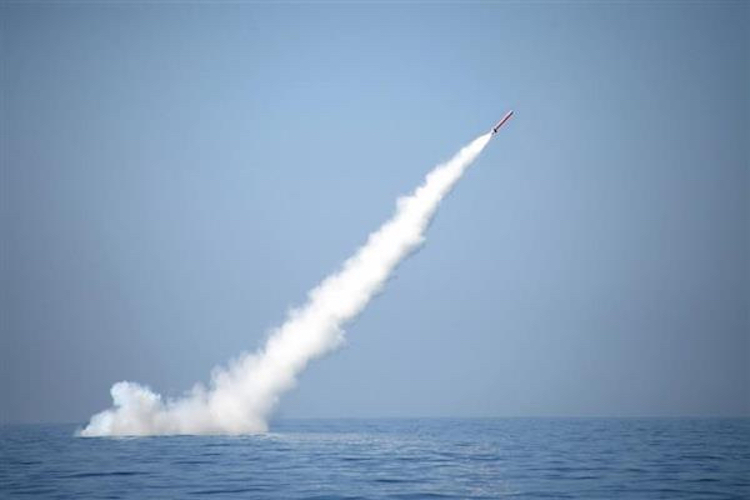New Nuclear Notebook: Pakistani Nuclear Forces, 2018

A Babur-3 dual-capable SLCM is test-launched from an underwater platform in the Indian Ocean on January 9, 2017.
By Hans M. Kristensen, Robert S. Norris, and Julia Diamond
The latest FAS Nuclear Notebook has been published in the Bulletin of the Atomic Scientists: Pakistani nuclear forces, 2018 (direct link to PDF). We estimate that Pakistan by now has accumulated an arsenal of 140-150 nuclear warheads for delivery by short- and medium-range ballistic and cruise missiles and aircraft.
This is an increase of about ten warheads compared with our estimate from last year and continues the pace of the gradual increase of Pakistan’s arsenal we have seen for the past couple of decades. The arsenal is now significantly bigger than the 60-80 warheads the U.S. Defense Intelligence Agency in 1999 initially estimated Pakistan might have by 2020. If the current trend continues, we estimate that the Pakistani nuclear warhead stockpile could potentially grow to 220-250 warheads by 2025.
The future development obviously depends on many factors, not least the Pakistani military believes the arsenal needs to continue to grow or level out at some point. Also important is how the Indian nuclear arsenal evolves.
The Pakistani government and officials initially described Pakistan’s posture as a “credible minimum deterrent” but with development of tactical nuclear weapons later began to characterize it as a “full spectrum deterrent.” Moreover, development is now underway to add a sea-based leg to its nuclear posture, and a flight test was conducted in 2017 of a ballistic missile that Pakistani officials said would be capable of carrying multiple warheads to overcome missile defense systems.
Additional information can be found here:
The U.S. should continue its voluntary moratorium on explosive nuclear weapons tests and implement further checks on the president’s ability to call for a resumption of nuclear testing.
This missile launch provides an opportunity to further examine China’s nuclear posture and activities, including the type of missile, how it fits into China’s nuclear modernization, and where it was launched from.
Known as Steadfast Noon, the two-week long exercise involves more than 60 aircraft from 13 countries and more than 2,000 personnel.
Increasing women in leadership roles is important for gender parity and bringing in new perspectives, but it does not guarantee peace.